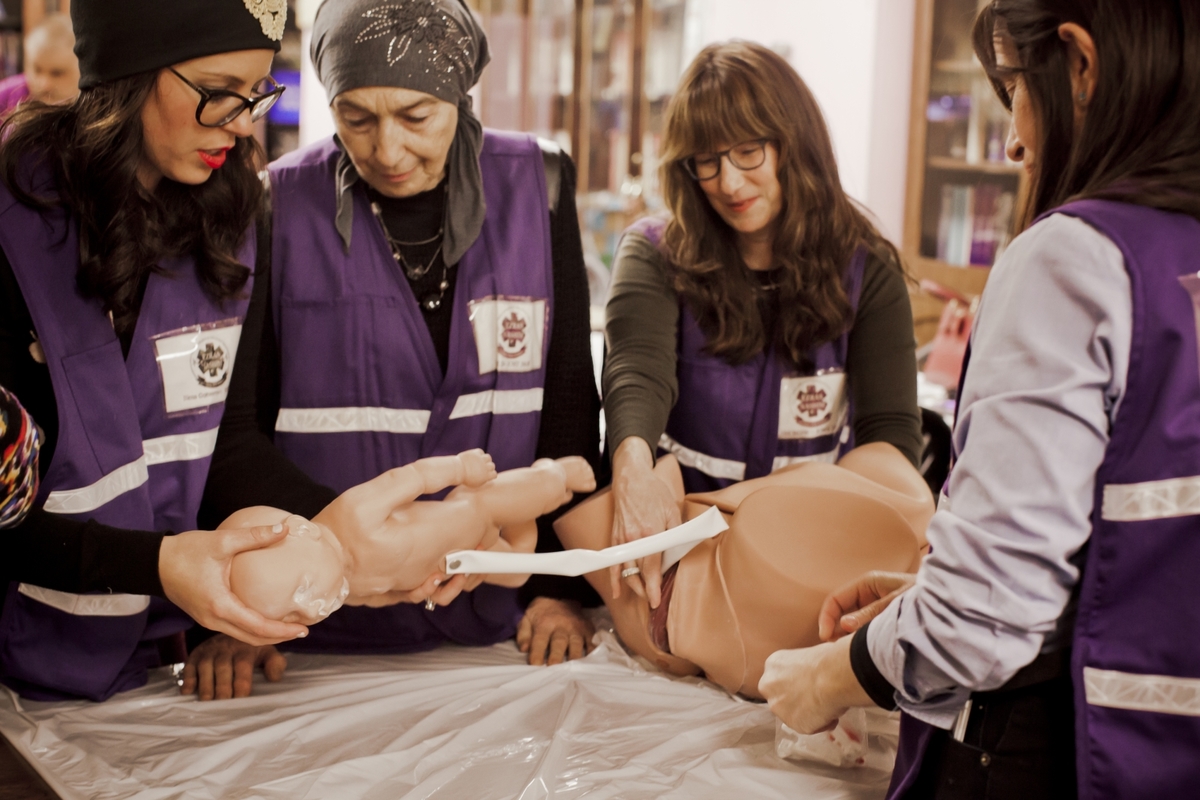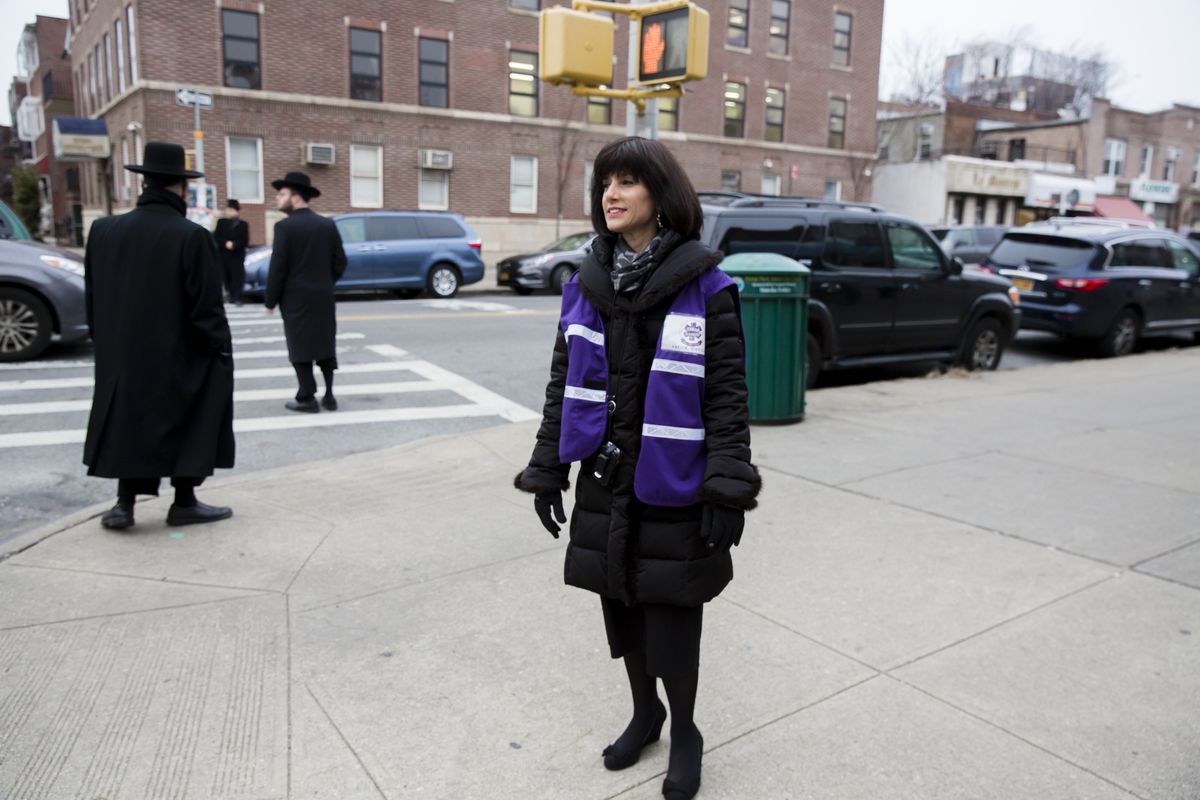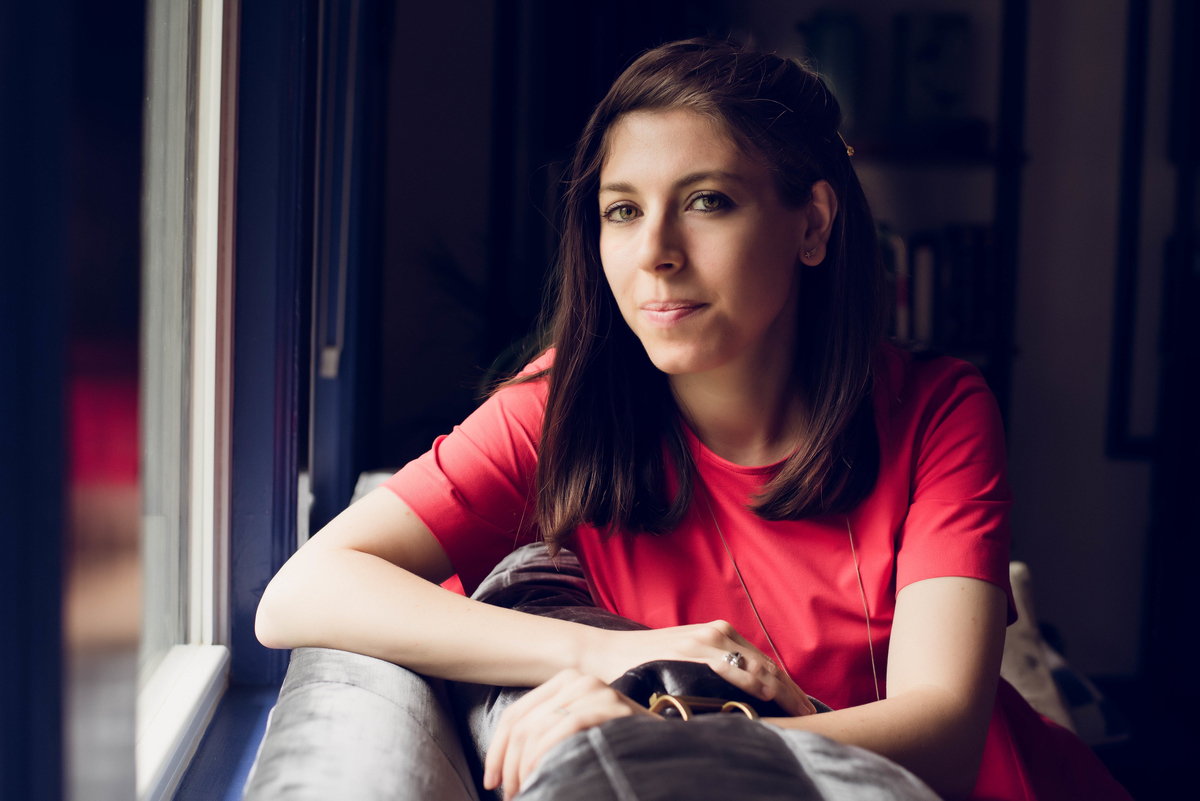
It’s been a year since 93Queen's theatrical release and subsequent POV broadcast. As the successful chaos of the release quiets, I am developing a new feature as an Artist in Residence at Concordia Studio, thus, making the transition from "first-time filmmaker" to simply "filmmaker." With this new project, I'm also moving from telling a universal story of women's empowerment in one very particular place, to finding a particular story embedded in a large national crisis. As I pause to take inventory of 93Queen's triumphs and trials in preparation for this new journey, I realize that the lessons learned are nothing like what I had expected.
In honor of the one-year anniversary of 93Queen's release and broadcast, I was invited by Documentary to revisit my complex, gratifying and even revelatory 93Queen journey to share what I have gleaned.
In the spring of 2013, as I started production on the documentary that would become 93Queen, I knew I had found a gem of story.
At the same time, there were so many unknowns: Would Ezras Nashim, the all-female EMT corps at the heart of my story, actually launch—and if so, when? Would a film about Borough Park's Hasidic community be received by the documentary funding community, and provide the necessary money to bring this film to fruition? How would the overall Orthodox Jewish community, of which I am a member, react to the film? And how would audiences in the world outside my religious community view the film?
While I had more questions than answers, the one thing I was certain of and determined to prove, 93Queen was not solely a Jewish film. My dream was to screen my finished film at the most prestigious mainstream film festivals alongside the myriad diverse documentaries that challenge viewers to look beyond stereotypes and recognize commonalities with subjects and communities that are often underrepresented.
I had absolutely no doubt about the empathic universality of my story: I was filming a feminist David-and-Goliath tale about change from within a conservative community at a time when both local politics and women’s empowerment were at the forefront of the doc industry's zeitgeist. As an Orthodox woman—an insider—I also had the authority to tell this particular story.
However, early on in the process, I learned that this seemingly perfect recipe for documentary success—a universal struggle set in an unknown community told by an insider with unprecedented access—came with its own set of challenges.

Shortly after teaming up with my producing partner, Heidi Reinberg, we set out to raise funds for the film. Heidi had lots of experience raising foundation money, and we made a good grant-writing team. Our trailer and work sample were solid. But the more we applied for grants in what seemed like a fairly hospitable climate for the story we were telling, the more frustrated we became. The feedback wasn’t about the story per se; it was about the community. The story that funders seemed to want was one of women escaping the Hasidic world.
The fact that the women of 93Queen were creating the first all-female EMT corps in America in one of the most conservative neighborhoods in the country seemed inconsequential. The Hasidic community was being viewed as a monolithic entity beholden to one single narrative of women oppressed.
It was quite strange, if not completely infuriating, to be told that I wasn’t digging deep enough if I wasn't demonizing a community into which I have a great deal of insight. I wondered: Is an insider to be trusted with artistic integrity only if they are willing to denounce the cultural elements or overriding system that make her particular community unique? I've noticed a trend: When an outsider tells a story, it becomes "universal," but when an insider tells that same story, it’s labeled "niche" or "myopic." Who, then, really does get to tell whose stories?
Amidst funding rejections and self-doubt, I trudged along as a one-woman crew, capturing the groundbreaking story unfolding as months and then years went by. And then, finally, hope arrived in the form of an invitation to attend the 2015 IFP Film Week. There, we got to meet funders face-to-face, including N’Jeri Eaton and Noland Walker of ITVS, whose mission includes giving voice to underrepresented communities—like the courageous Hasidic women at the heart of Ezras Nashim. They urged us to apply, and we were indeed chosen to receive ITVS support months later.
I can't help but point out that it was funders and filmmakers of color—specifically ITVS and 93Queen Executive Producer Marco Williams—who immediately recognized the culture-shifting progress being made by the women of 93Queen. There was deep recognition of the women’s individual struggle and of what they were actively accomplishing. The critiques and notes never doubted our subjects’ choices or agency—they were always in service of the story.
In the months that followed IFP Week, we were able to secure financial and artistic support from the doc industry's most venerable institutions: IDA (through a Pare Lorentz Documentary Fund grant), Sundance Institute, Fork Films, Tribeca Film Institute, New York State Council on the Arts, Chicago Media Project, Picture Motion, Hartley Film Foundation, among others. It was extremely validating to receive votes of confidence from organizations of which I had always dreamed of being a part. Their support allowed me not only to complete 93Queen, but crucially, they empowered me to be uncompromising in my storytelling.
That support gave me momentum as I prepared for the 2017 Hot Docs Forum. We were one of 19 projects selected to pitch. It was thrilling just to have a seat at the pitch table and was equally gratifying to see the reaction to the film from the world’s foremost commissioning editors, including Gudrun Hanke-El- Ghomri of Arte and Guy Lavie from Yes—both of whom picked up the film right at the forum. Then we won the forum'S First Look top prize. I was stunned. We seemed to have not only transcended our earlier challenges but reached peak acclaim for a film that was not yet completed. The film was being evaluated on the characters and their story, not judged on stereotyped notions of the community or the people.
I went into the last leg of post-production invigorated and energized. We were getting great feedback, and had direct lines with festival programmers. POV had already scooped up the film for a September 2018 broadcast. In short, we felt we had a very strong shot at premiering at an A-list American film festival.
So . . .when we didn't get into our first-choice festival, I was devastated.
But, I remained hopeful that the next A-level festival would accept it. But when we were rejected by that festival—and then a third and a fourth—despite all the validation I had received from the funding world, IFP Week, ITVS, the Hot Docs Forum, and POV, I wondered why A-list US festival programmers were not programming the film. (93Queen had its world premiere at Hot Docs, and its US premiere at the San Francisco Jewish Film Festival).
How can a film with so much support be completely shut out of top-tier mainstream American festivals? My early feelings regarding the topic—the Hasidic community and expectations of how it "should be" depicted started to resurface. Or, did 93Queen get caught in the gap between the project development side of the field and the curation and acquisition side of the field?
Like the vast majority of filmmakers, I will never know why my film was not selected for inclusion in these festivals. It happens all the time, even to the most experienced filmmakers. No film or filmmaker can have it all and 93Queen already got more than most. So, while this disappointing moment was a personal defeat, sowing seeds of self-doubt and raising questions again about the types of stories "allowed" to be told by and about marginalized communities, I was determined to use the rejections as an opportunity to shift my distribution plan.
After five years of cinematic labor, I felt I owed it to the film and myself to experience 93Queen with as many live audiences as possible—and if that wasn't going to happen on the festival circuit, I wanted a proper theatrical release with reviews and awards contention.
It seemed illogical—and some might even say frivolous—to even consider a theatrical release, especially given our tiny four-and-a-half-month window before our broadcast. Then again, I felt the same way about making a documentary about empowered Hasidic women. So, once again, I took control, scraped money together, and secured a national theatrical release with Abramorama—and it was one of the best decisions I ever made.
That theatrical run turned out to be a tremendous success. We played in over 25 cities, including a six-week holdover at New York's IFC Center with multiple sold-out screenings. The reviews, including those in The Hollywood Reporter, The New York Times and the Los Angeles Times, were universally positive. Most gratifying for me was observing Ultra-Orthodox women who had never set foot in a movie theater return for encore screenings, bringing new family members each time to feel empowered by their representation.
Following our broadcast premiere on POV, I dove headfirst into community screenings (with Mean Streets Management), a renewed festival life on the robust Jewish and international film festival circuit, as well as educational distribution with Women Make Movies. This past July, 93Queen had an incredibly well-received broadcast on ARTE, with the help of Cinephil.
To date, 93Queen has had over 100 paid community screenings, including dozens of paid speaking engagements, and played in more than 60 film festivals worldwide (with more on the way). To maximize these event screenings, we only just recently released the film on digital and DVD (through Cargo Film and Releasing). Due to the success around our community-engagement screenings, I have fully recouped the considerable money I risked for the theatrical release and feel an incredible sense of fulfillment by 93Queen's enduring impact. In the end, our risky theatrical run and our small window created an incredible amount of momentum that is still delivering results one year later.

Through retracing 93Queen's winding road to success, I landed on three important lessons:
1) There really are no guarantees...but that works both ways. There actually is no "perfect recipe" for funding or distribution because the landscape is constantly changing. A plethora of rejections one year doesn't mean you won't get acceptances the following year, and vice versa. Having a tremendous amount of early industry support does not necessarily translate to festival inclusion. Funding and festivals are separate entities. They can be looking for different types of stories. Similarly, just as screening at an A-list festival does not guarantee distribution, festival rejections do not guarantee a shortened lifespan for a film.
2) Follow the love. Focus on the individual and institutional support you do have. The people invested in you and your film will take you much farther than those you are desperately trying to win over. All of 93Queen’' funders worked together to champion our theatrical release and POV broadcast.
3) Niche marketing can give you mainstream results. As much as I wanted 93Queen to stay away from being construed as niche, it was my own community, in conjunction with great reviews, that allowed this film to transcend stereotypes and enjoy mainstream theatrical success. The more outreach we did toward my target audience, the more they showed up and the longer the film played, allowing more diverse audiences to then have the opportunity to catch the film. The success of the theatrical release and broadcast then cascaded to both national and international community engagement.
I've learned that non-theatrical private screenings can be an entire industry in itself. It's quite labor-intensive, but the income and resulting database (which I now have for other projects) is well worth it.
As I turn my attention to my second feature, I feel liberated and empowered by 93Queen’' long, strange trip. Not only do I simply know the lay of the land much better, but I am able to recognize various avenues and definitions of success that will lead to more sustainability. While I feel very strongly that telling a story from an insider perspective does not, and should not, deem a film niche—as that defeats the entire goal of diversifying the field—I should never underestimate the power of a "hometown" audience.
An audience—from whichever community or region—takes an incredible amount of creativity, ingenuity and persistence to nurture. In the same way that community stories are not necessarily "small" stories, target or niche audiences are to be heavily valued and leveraged. I am in awe of independent filmmakers' moxie—championed by the field—to consistently reinvent and create quality diverse content for hungry audiences in unexpected ways. It's a privilege to bring more stories and voices into our cultural landscape, and to learn that connecting to the right audience with the right partners—however I find them—can be a new definition of success.
Paula Eiselt is an independent filmmaker and mama from New York. Her artistic goal is to shatter as many preconceived narratives as she can get her hands on. She is honored to be an Artist in Residence at Davis Guggenheim’s Concordia Studio, where she is developing her next feature. Paula works as the creative consultant for the Jewish Writers Initiative, serves on the board of the Jewish Orthodox Feminist Alliance and is a proud member of Torah Trumps Hate, a group of progressive observant Jews working to dismantle the current administration.
